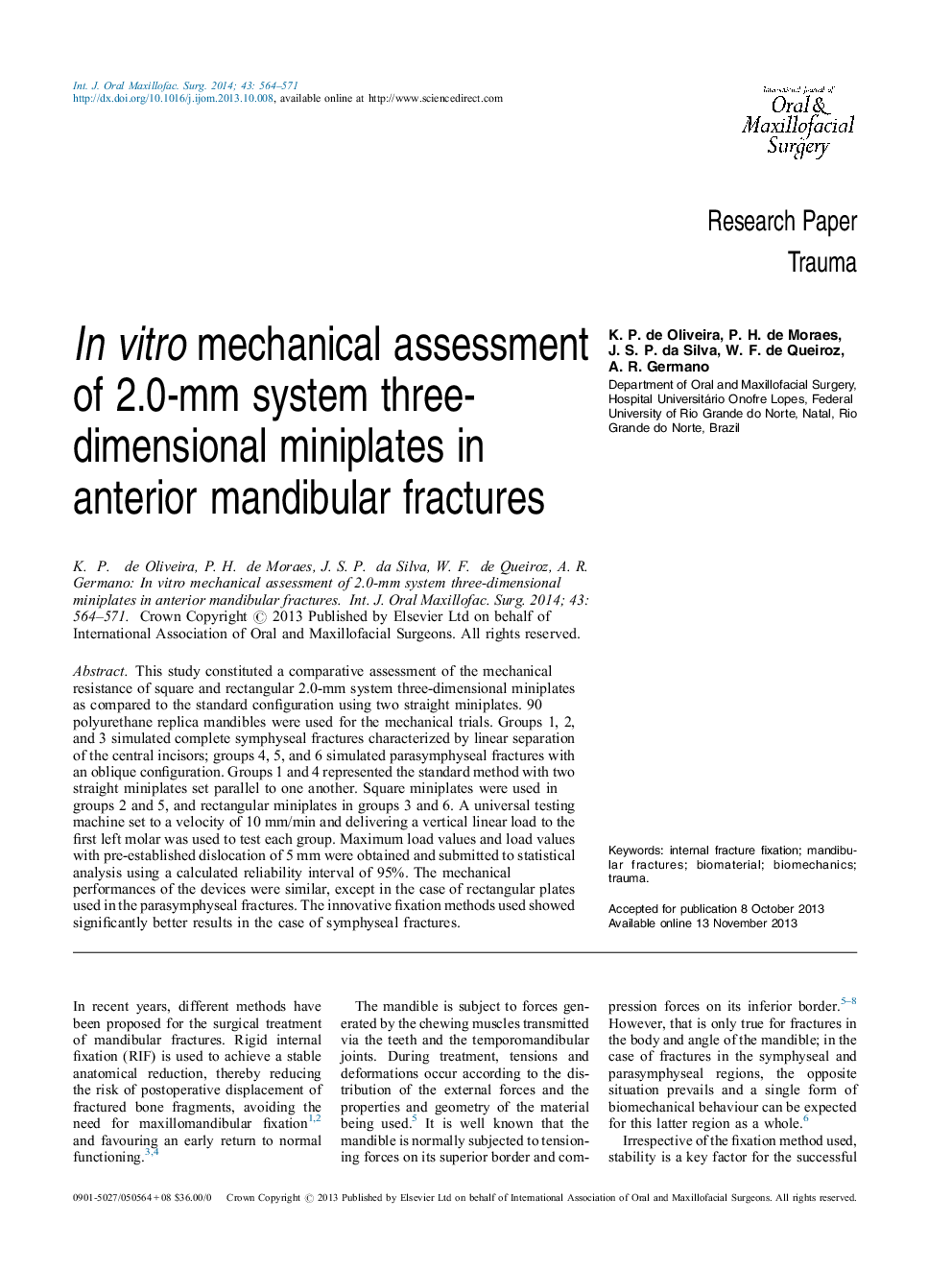| Article ID | Journal | Published Year | Pages | File Type |
|---|---|---|---|---|
| 3132290 | International Journal of Oral and Maxillofacial Surgery | 2014 | 8 Pages |
This study constituted a comparative assessment of the mechanical resistance of square and rectangular 2.0-mm system three-dimensional miniplates as compared to the standard configuration using two straight miniplates. 90 polyurethane replica mandibles were used for the mechanical trials. Groups 1, 2, and 3 simulated complete symphyseal fractures characterized by linear separation of the central incisors; groups 4, 5, and 6 simulated parasymphyseal fractures with an oblique configuration. Groups 1 and 4 represented the standard method with two straight miniplates set parallel to one another. Square miniplates were used in groups 2 and 5, and rectangular miniplates in groups 3 and 6. A universal testing machine set to a velocity of 10 mm/min and delivering a vertical linear load to the first left molar was used to test each group. Maximum load values and load values with pre-established dislocation of 5 mm were obtained and submitted to statistical analysis using a calculated reliability interval of 95%. The mechanical performances of the devices were similar, except in the case of rectangular plates used in the parasymphyseal fractures. The innovative fixation methods used showed significantly better results in the case of symphyseal fractures.
